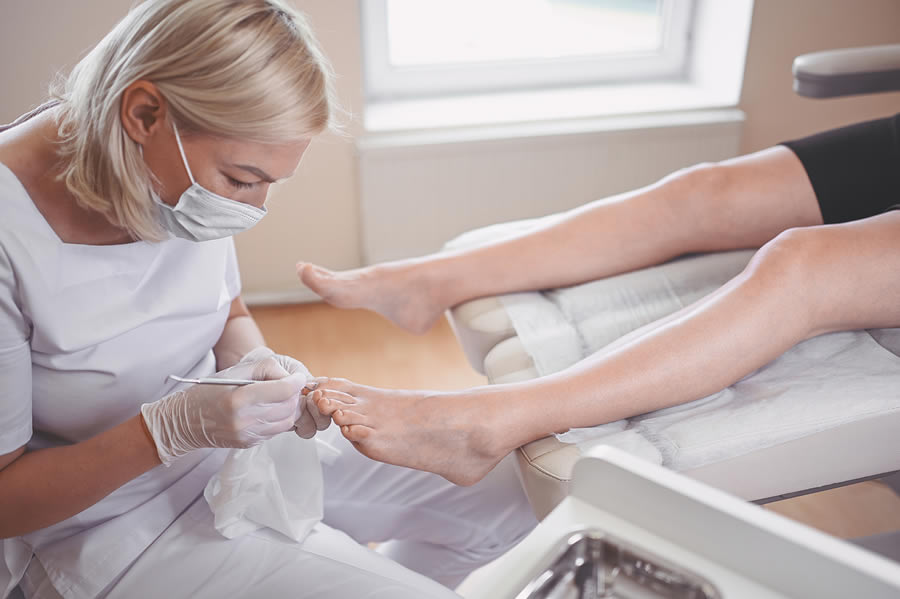
Diabetes is a chronic disease that affects how your body uses glucose, a type of sugar that is a primary source of energy. People with diabetes have high levels of glucose in their blood, which can damage their blood vessels and nerves over time. One of the areas that can be particularly affected by diabetes is the feet. In this article brought to you by Podiatry Centers of Maryland, we will discuss diabetes and its effects on feet. If you are looking for a podiatrist, or foot doctor, to apply diabetic foot care, then give us a call and schedule a convenient appointment today.
As mentioned earlier, the high levels of glucose in a diabetic’s blood can damage blood vessels and nerves over time. As a result, diabetes can lead to various foot problems that can range from minor to severe. Some common foot problems associated with diabetes are:
Fortunately, there is a lot that diabetics can do to mitigate the risks of the problems mentioned earlier. The most important thing to do is continue taking medication, eating a healthy diet, and exercising regularly to manage blood sugar levels.
Next, take especially great care of your feet. Wash your feet daily with mild soap and warm water and dry them thoroughly. Moisturize your feet to keep the skin soft and supple. Protect your feet by always wearing shoes or slippers; Avoid walking barefoot, even indoors. Wear shoes that fit well and provide adequate support and protection.
Finally, check your feet daily. Inspect your feet for cuts, sores, blisters, or other injuries. Use a mirror or ask someone to help you check the bottoms of your feet. Schedule regular foot exams with your podiatrist to monitor any changes in your feet and identify any problems early on.
People with diabetes are at higher risk of developing foot problems. Proper foot care, including daily foot inspections and regular medical checkups can help prevent these complications. Call Podiatry Centers of Maryland to schedule an appointment with a podiatrist today.
Everything You Need to Know About Flat Feet You may have noticed that babies usually have relatively flat feet, with a minimal or non-visible arch.…
Read More+How Does a Sprained Toe Happen? A toe sprain can be a painful and immobilizing injury. This common foot injury happens when the ligaments connecting…
Read More+Benefits of Becoming a Podiatrist Becoming a podiatrist, or foot doctor, is a remarkable journey that offers a host of benefits. It is a profession…
Read More+Why Are Your Feet So Ticklish? Ticklish feet have been a subject of amusement and laughter for some and discomfort for many others. The mere…
Read More+